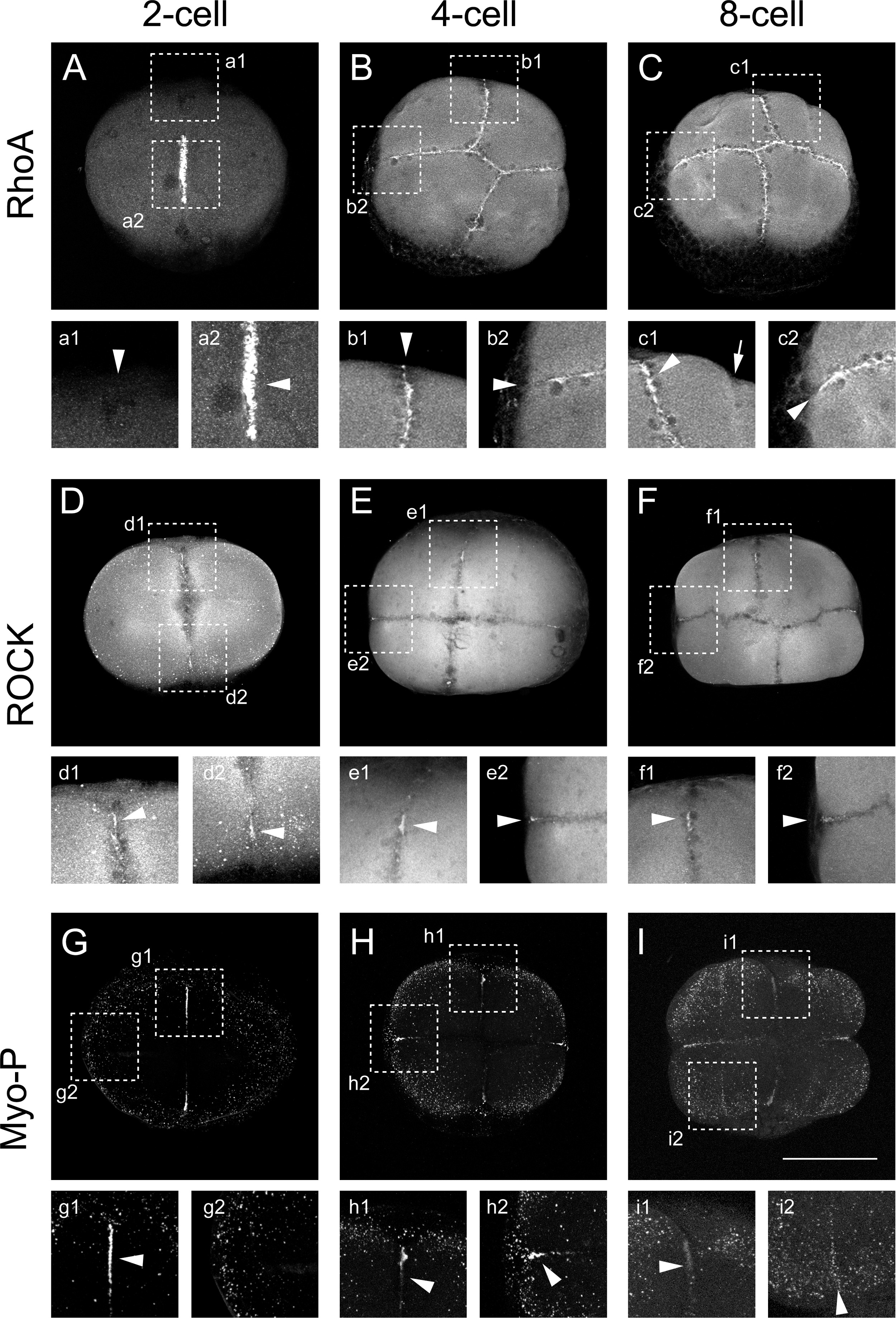Fig. 2
RhoA/ROCK/myosin pathway is localized at the cleavage furrow during the first cell divisions. (A) RhoA immunolocalization at early cleavage in 2-cell (n=16); (B) 4-cell (n=22) and (C) 8-cell embryos (n=9) of four independent experiments. Insets show the immunolocalization signal at the edge of the first cleavage furrow (a1) or the most animal region of the first cleavage furrow in 2-cell embryo shown in A. (b1), first cleavage furrow (b2), second cleavage furrow in 4-cell embryo. (c1), first cleavage furrow and (c2), second cleavage furrow, in 8-cell embryo. (D) ROCK immunolocalization in, 2-cell (n=10); (E) 4-cell (n=18) and (F) 8-cell embryos (n=24) of six independent experiments. Insets show magnification of the first or second cleavage furrow at 2-cell (d1 and d2, respectively), 4-cell (e1 and e2, respectively), 8-cell stage (f1 and f2, respectively). (G)Phosphorylated myosin immmunolocalization in 2-cell (n=5), (H) 4-cell (n=21) and (I) 8-cell embryos (n=5) of five independent experiments. Insets show magnification of the first or second cleavage furrow at 2-cell (g1 and g2, respectively), 4-cell (h1 and h2, respectively), 8-cell stage (i1 and i2, respectively). Scale bar 250 ?m.
Reprinted from Developmental Biology, 421(1), Miranda-Rodríguez, J.R., Salas-Vidal, E., Lomelí, H., Zurita, M., Schnabel, D., RhoA/ROCK pathway activity is essential for the correct localization of the germ plasm mRNAs in zebrafish embryos, 27-42, Copyright (2017) with permission from Elsevier. Full text @ Dev. Biol.

